
STOMPer R is appealing for help to find her blue parrotlet who went missing on June 6 near Woodlands Drive 16.
Said the STOMPer:
"Bodhi was lost on June 6 near Woodlands Drive 16.
"He is still a baby so he needs special care.
"He wears a green metal ring with a serial number starting with the letters 'JL' on his right leg.
"We are heartbroken.

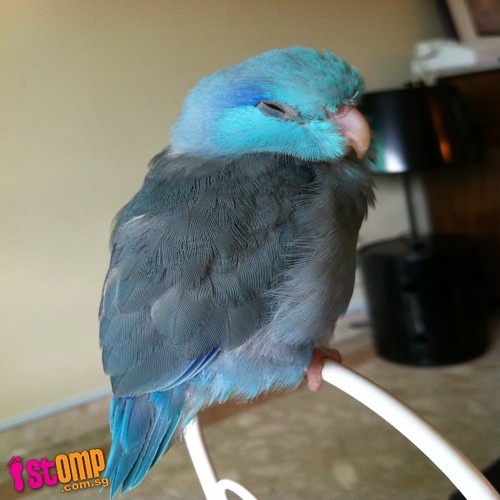
Bodhi is a blue colour mutation of the Pacific parrotlet (Forpus coelestis), a species native to Peru and Ecuador.

(Photo by peterdehaas2317)
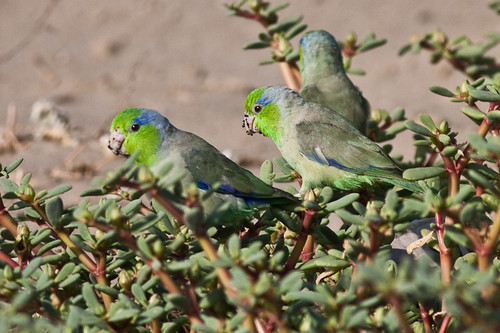
Pacific parrotlets are sexually dimorphic: these are males;
(Photo by steve happ)
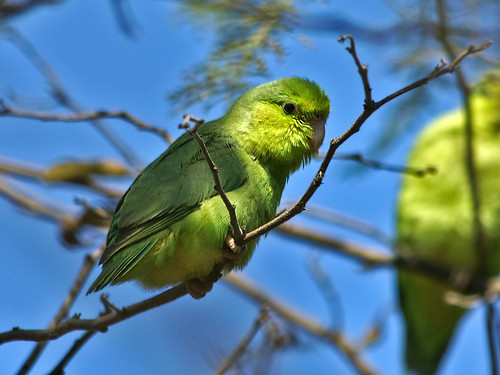
(Photo by David Cook Wildlife Photography (kookr))
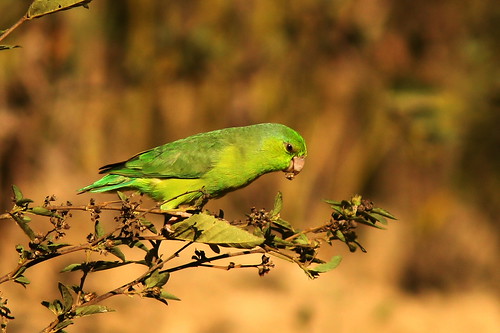
The females are much more drably coloured;
(Photo by jim lehmann)
Pacific parrotlets are considered to be quite common in the pet trade, although still not as prevalent as other small parrot species. Several colour mutations have been selected for and bred in captivity, including the blue form seen in this post.

(Photo by JuliePix)
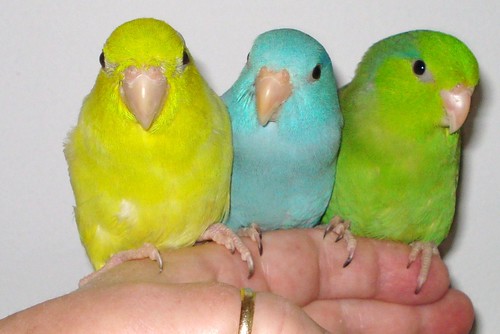
(Photo by barbsbaystatebirds)

(Photo by KoriG)
Besides the Pacific parrotlet, other species of these miniature parrots are also fairly common in aviculture, such as the following:
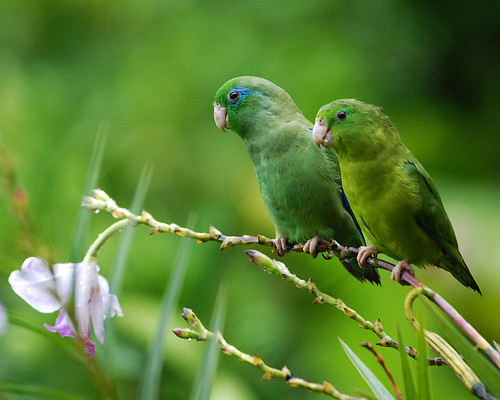
Spectacled parrotlet (Forpus conspicillatus) of Colombia, Panama and Venezuela;
(Photo by Frank Shufelt)
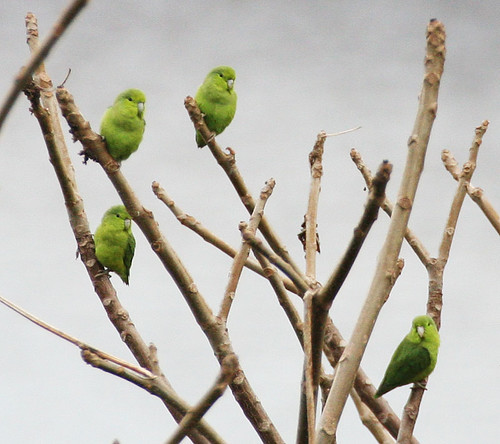
Mexican parrotlet (Forpus cyanopygius) of western Mexico;
(Photo by Glen Tepke)
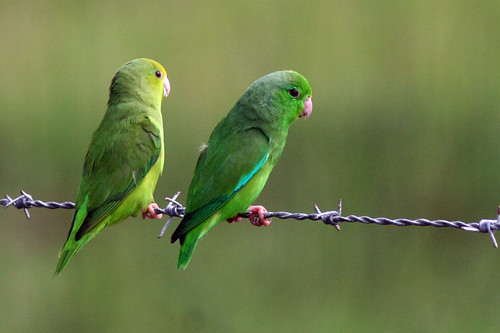
Green-rumped parrotlet (Forpus passerinus) of northern Colombia, Venezuela, the Guianas, and northern Brazil along the lower Amazon River;
(Photo by Karla Pérez León)
Parrotlets are among the world's tiniest parrots, even smaller in size than other parrots commonly kept as pets, such as the peach-faced lovebird (Agapornis roseicollis) and budgerigar (Melopsittacus undulatus). Still, they are said to be feisty, territorial and playful, requiring lots of space and plenty of toys to keep them occupied.
Many species of parrots are available as pets in Singapore, and a number of these have been encountered as free-flying birds, most likely escaped pets. An even smaller handful have managed to establish breeding populations in the wild; for instance, flocks of Tanimbar corella (Cacatua goffiniana) and red-breasted parakeet (Psittacula alexandri) are now commonly encountered in many areas of Singapore, with unknown impacts on native birds, especially our native parrots such as the long-breasted parakeet (Psittacula longicauda) and blue-crowned hanging parrot (Loriculus galgulus).
Of course, any article about missing pet parrots that happen to be blue in colour brings to mind a recent animated movie that I'm personally quite fond of. How coincidental that the events of the movie unfold within a Brazilian city where governments in real life are set to gather in a few days' time, hopefully formulating international agreements that will help build a more sustainable and ecologically sensitive future.